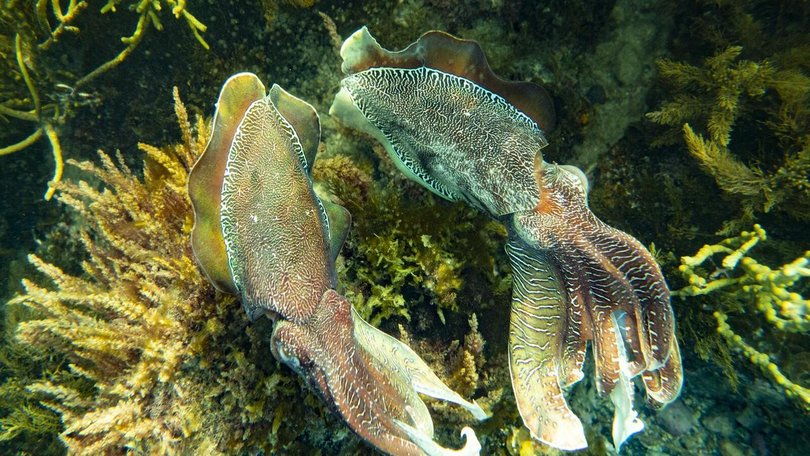South Australia: Cuttlefish catastrophe feared from deadly algal bloom

A devastating algal bloom is threatening a population of cuttlefish that gathers annually in a unique global phenomenon, and swift action has been urged to protect it from a catastrophic wipe-out.
A Biodiversity Council report outlines seven urgent responses to the algal bloom off South Australia’s coast, including spending at least $10 million to kick-start scientific research to assess which species are affected by the bloom, by how much, and to monitor recovery.
The giant cuttlefish, in SA’s Upper Spencer Gulf, is the first species that should be investigated for emergency intervention, the report says.
Sign up to The Nightly's newsletters.
Get the first look at the digital newspaper, curated daily stories and breaking headlines delivered to your inbox.
By continuing you agree to our Terms and Privacy Policy.Each winter, tens of thousands of giant cuttlefish migrate to the waters near Whyalla to breed, creating a spectacular natural event that has been featured on David Attenborough’s Blue Planet series.
Tourism operator Matt Waller, who takes more than 6000 people on boat tours each season, said there was a “really acute risk in a small area”.
“If the algal bloom makes it into Upper Spencer Gulf and specifically lands over this area of cuttlefish reef - it’s 8km long and 40m wide, and 90 per cent of the population lay their eggs on that strip,” he said.
“If that algal bloom ends up where those eggs are now, the result of that is in two years’ time, we will have lost an entire generation of cuttlefish.”
The Biodiversity Council says the algal bloom is just tens of kilometres away and tracking towards the breeding site, with cuttlefish trapped at the tip of Spencer Gulf.
“There is a high risk the bloom will reach the developing eggs, or that adult and then newly hatched cuttlefish will swim directly into its toxic waters,” the report says.
“This could devastate the local population and the broader ecological and tourism values associated with this iconic event.”
The report urges government agencies to work with cuttlefish experts to investigate transferring some eggs to an aquaculture facility until the bloom has dissipated.
Mr Waller said if the population was wiped out, “I would have no business”.
“I’m trying to be philosophical about it because I can see that there is a high probability of it happening,” he said.
“I’m mostly concerned about the future for this particularly unique species of giant cuttlefish, because it’s so cool.
“The biodiversity here is not found anywhere else in the world so if we lose it, it’s gone.”
On Wednesday, Labor, the coalition and the Greens backed a Senate inquiry into the algal bloom, which has killed tens of thousands of marine animals from more than 450 species since it was identified off the Fleurieu Peninsula in March.
It has since spread along the coastline, prompting a $28 million investment package from the SA and federal governments for clean-up, recovery, research and industry support.
